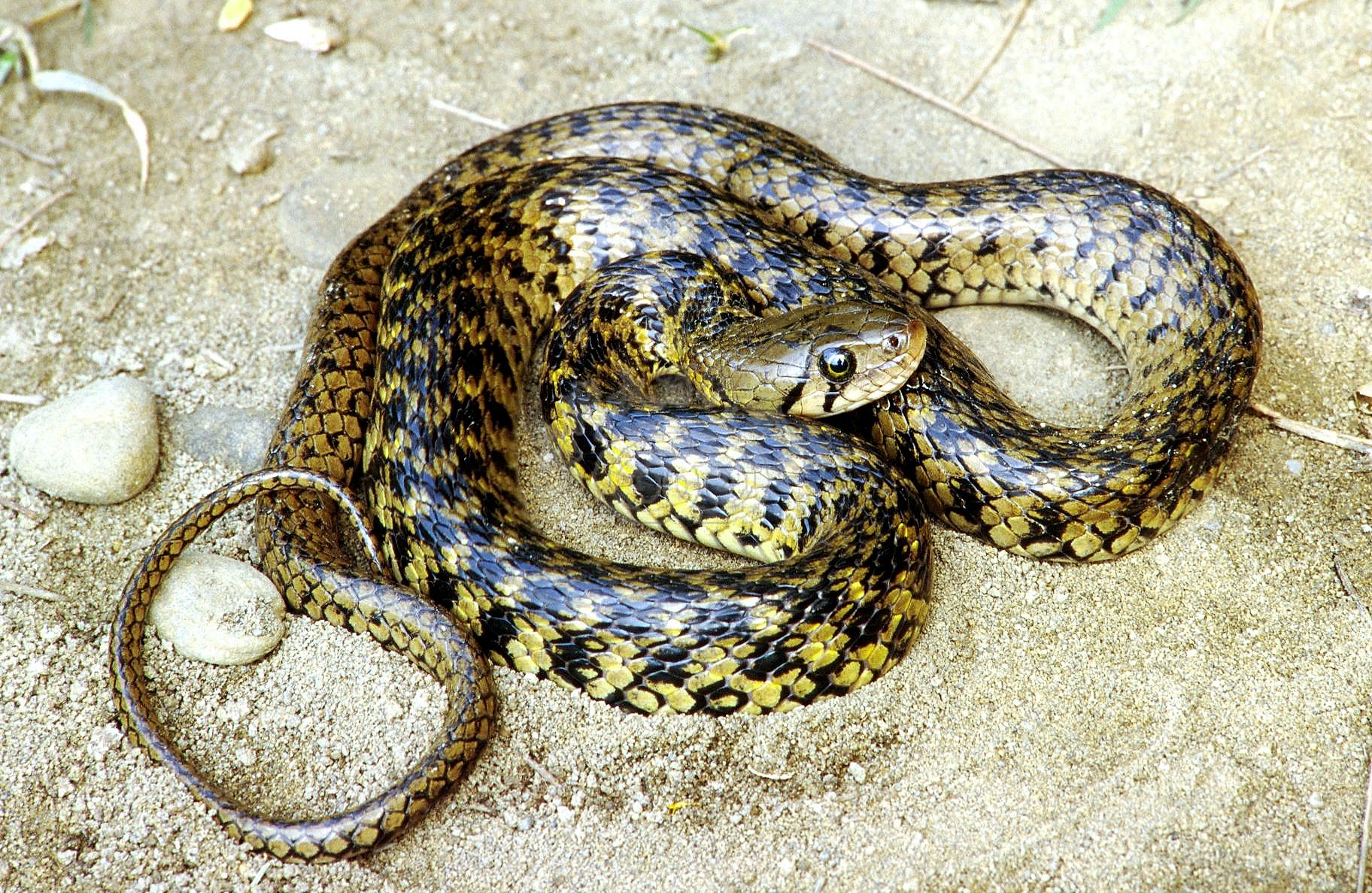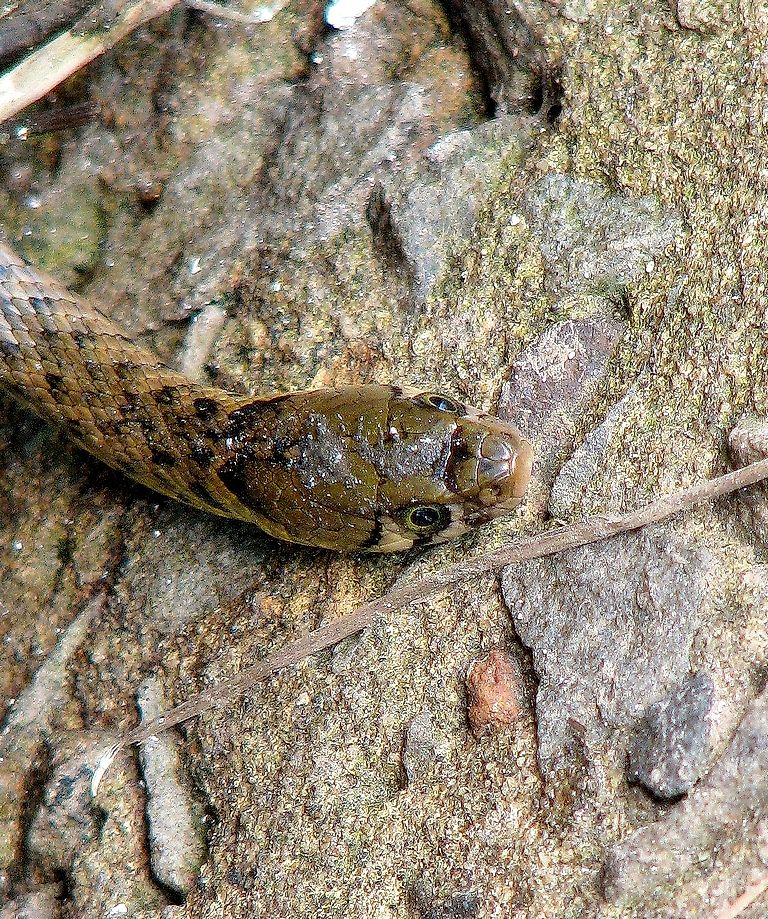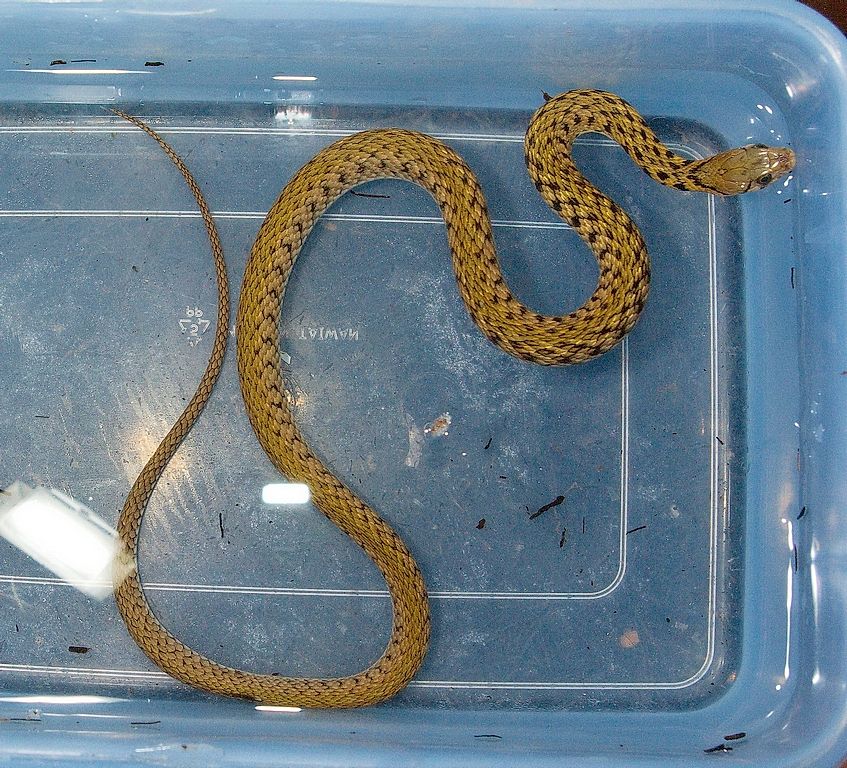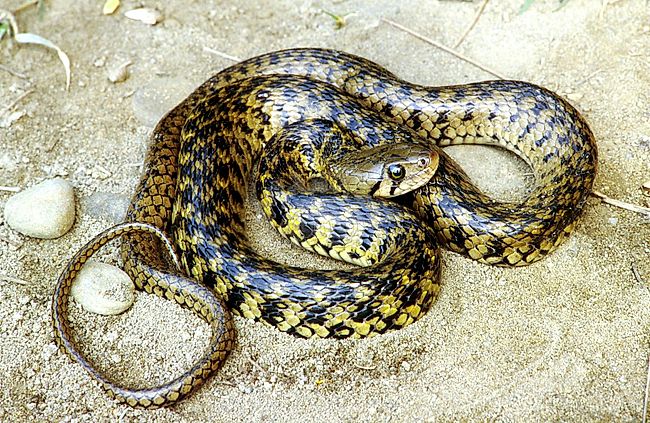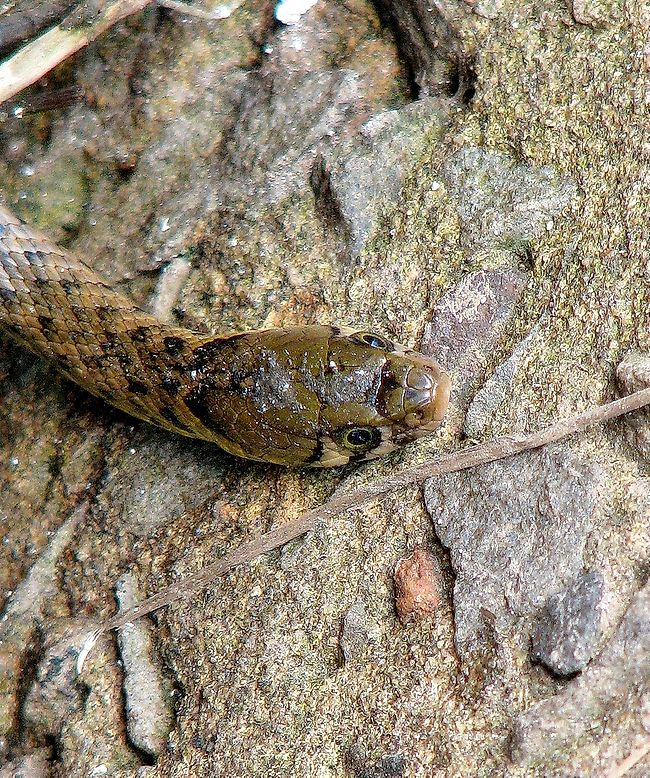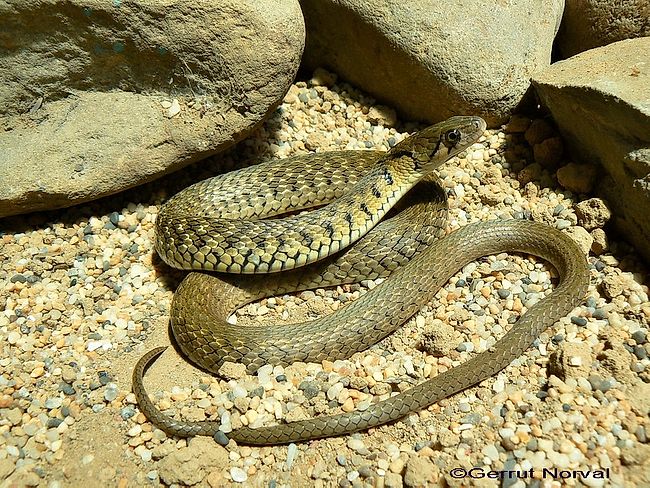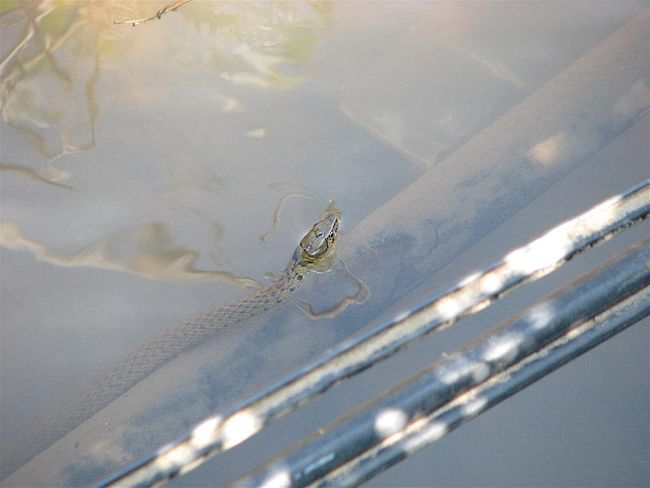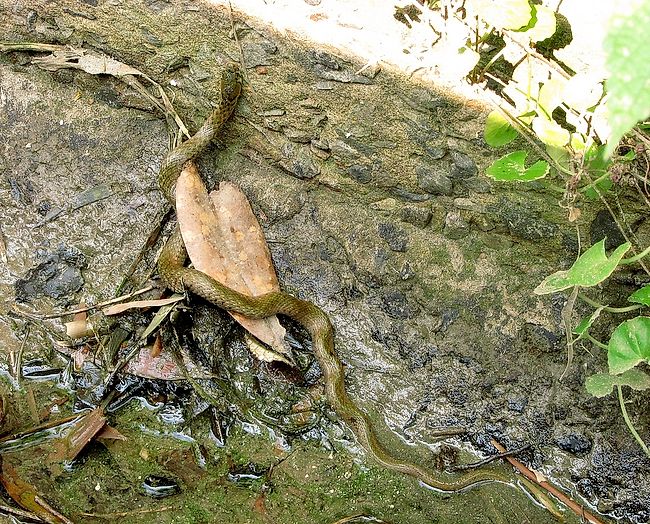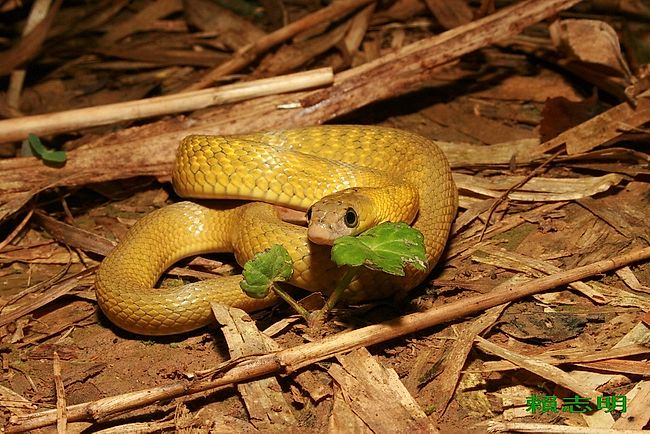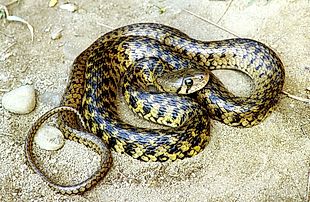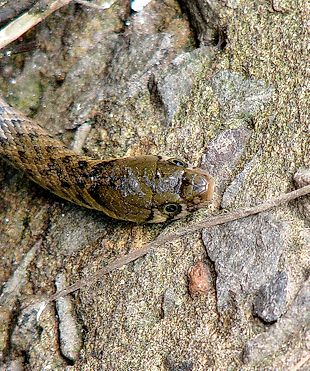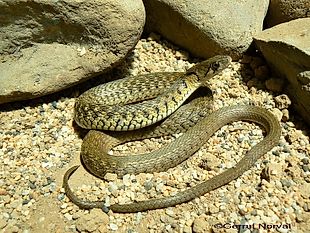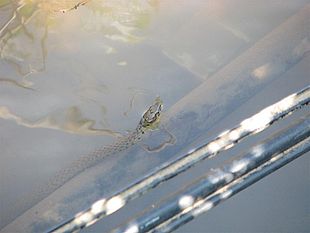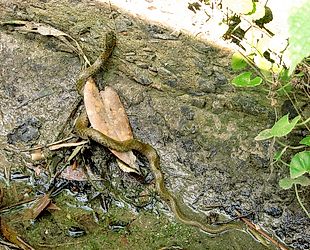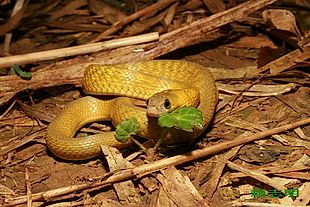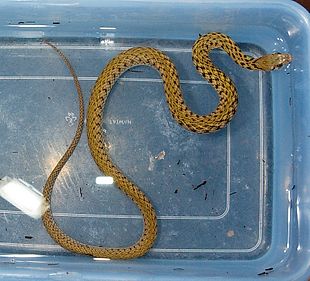Fowlea piscator
Checkered Keelback
草 花蛇 (cao3hua1she2)
Status: Not Protected
Non-venomous
Videos
- F. piscator in a lotus pond
- F. piscator playing dead
More Photos
- F. piscator in the wild
- Catching F. piscator in a paddy field
Family
Colubridae, subfamily Natricinae
Max. length
120 cm
Occurrence in Taiwan
Throughout Taiwan and Kinmen, up to 500 m altitude.
Global Distribution
Afghanistan, Pakistan, Sri Lanka, India (Maharashtra, Arunachal Pradesh), Burma, Thailand, Laos, Vietnam, West Malaysia, Indonesia (Sumatra, Java, Borneo, Sulawesi), C/South China (Zhejiang, Jiangxi, Jiangsu, Fujian, Guangdong, Guangxi, Hainan, Yunnan, Guizhou, Anhui, Hunan, Hubei, Shaanxi), Taiwan.
Description
This snake is medium in size; total length up to 120 cm. There are 17-19 (19 at
mid-body) rows of scales, all keeled except those on the flanks. Head is
oval to slightly triangular; body is moderately stout and round; tail is
long. Eye is medium-sized; iris is dark gray to gray black, heavy but
uniform deposit of black pigment interpersed with dirty yellow, and pupil
is round, jet black, surrounded by broad ring of bright to dirty yellow.
Tongue is dark gray to black, fork tips darker than stem. This snake is
characterized by great diversity in coloration. Upper head is olive gray
except for frequently indistinct pattern of black near mid-line and
posterior end of parietals. There are two posteriorly directed oblique and
parallel black lines near eye, the anterior line extends from lower edge
of eye to mouth while the poserior line from a point back of eye to corner
of mouth; the latter may join with a black line forming a broad ''V'' or
''W'' on the nape. Usually, upper body is olive-brown to reddish with
black spots arranged in alternating rows, creating a checkered appearance,
which is more distinct anteriorly. Ventral head and neck are dirty white
to cream, may be tinted with yellow or red. Ventral body bears horizontal
bands due to black pigmentation along anterior margin of the ventral; the
horizontal lines are more prominent in mid and posterior part of body.
Anal scale is divided and subcaudals are paired, with pigmented borders.
Biology & Ecology
This diurnal or nocturnal snake is one of the most common serpents on Taiwan. It is
semi-aquatic and seldom ventures beyond the close vicinity of water,
inhabiting ponds, streams, flooded rice fields, and other freshwater
bodies. Its prey includes fish, frogs, toads, tadpoles, insects, lizards,
birds, mice, and even small snakes. F. piscator usually stalks its
prey and grasps it with its vice-like jaws and if in a favourable
position, begins to swallow it immediately. Often frogs will croak for a
considerable amount of time from within this snake's stomach before
succumbing to its digestive fluids or suffocation.
A very active snake by day but it may hunt frogs by night. The snake may
be aggressive and is usually moderately nervous when first confronted in
its habitat; it will usually strike and bite if disturbedand when it
senses that it cannot escape its challenger. If chased over long distances
it may jump clear off the ground repeatedly in order to escape.
The snake is a prolific breeder: clutches containing 8-88 eggs (usually
more than 30) of 1.3-2.4 x 1-1.5 cm have been recorded. Hatchlings measure 17-19 cm
in total length. Females who mate in spring and fall, respectively, lay
eggs in late spring-summer and the following spring. The male often
continues to exist with the female throughout the mating season.
Colorations vary, some consisting of dark spots arranged in a
quincunx-like pattern often separated by a whitish network. It is often
olive-brown or olive-green dorsally and pale brown or white underneath.
Often the dorsal coloration is accompanied by lighter spots arranged in a
checkered pattern (hence the English common name).
While F. piscator does not possess any venom glands, its saliva might contain toxic elements:
it has been reported numerous times that after a bite the wound tends to swell and itch severely.
Etymology
In his original description of Fowlea, Theobald states "Captured by E. Fowle, Esq., who is one of the very few who have liberally aided me in the study of our Indian reptiles."
piscator is Latin for yellow and punctatus. Punctatus means spotted and refers to the dorsal color pattern, although it rarely has clear yellow spots.
The Chinese name 草花蛇 (cao3hua1she2) means "grass flower snake".
Further Info
